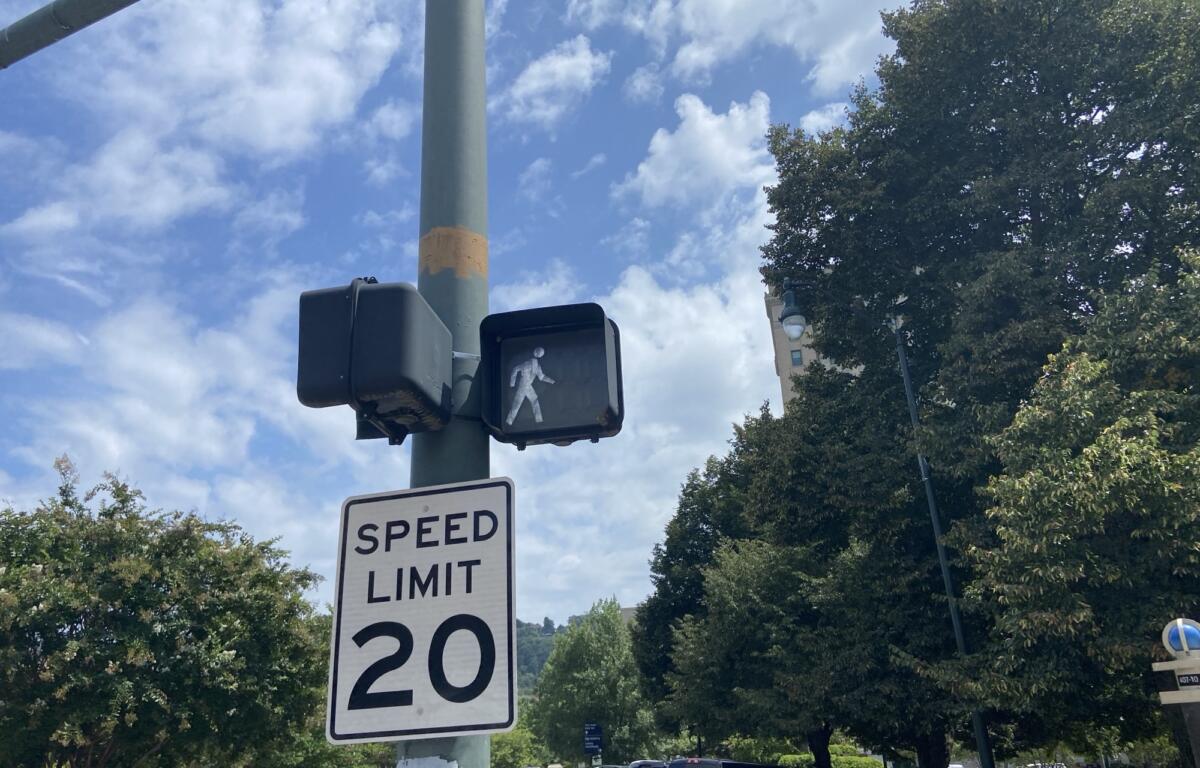ASHEVILLE, N.C. (828newsNOW) — Do you ever feel rushed to get from one end of the crosswalk to the other? A new state-wide initiative is trying to keep people safer by adding a little extra time on the clock.
The North Carolina Department of Transporation (NCDOT) has begun adding a “leading pedestrian interval,” or LPI, to its traffic signals, “giving pedestrians a head start of three to seven seconds to enter the marked crosswalk before motorists on the parallel direction get a green light,” according to a release from the department.
“This change makes pedestrians more visible for drivers,” said Nick Zinser, NCDOT’s western region signals engineer, in a press release. “It’s a safety enhancement, and it can be done at a low cost by reprogramming the existing equipment at our traffic signals.”
NCDOT Public Relations Officer Andrew Barksdale told 828newsNOW the department decided to expand LPIs across the state because they had already been a big success in bigger cities.
“We decided to make this policy change departmentwide beginning May 1, 2024 because we’ve seen how effective this has been in downtown Raleigh and downtown Charlotte, which began using LPIs a few years ago,” Barksdale wrote in an email. “There was nothing specific that prompted us to do make this change departmentwide, except we realize this can only enhance pedestrian safety, so it would be a good, best practice to follow moving forward.”
NCDOT Division 13 and 14 Communications Officer David Uchiyama told 828newsNOW there are a few of these enhanced crosswalk signals in downtown Asheville, including the intersection of Patton Avenue/South Pack Square and College Street with Broadway Street/Biltmore Avenue.
“NCDOT staff is in the early stages of converting all signal software,” Uchiyama wrote in an email. “So, it will likely be a year or more before we would have the capacity to start looking at new LPI implementations on a case by case basis at locations that have push buttons.”
Barksdale said while NCDOT hasn’t done any independent studies on the impacts of LPIs, he referenced a 2018 Federal Highway Administration study that found a 13% reduction in pedestrians being struck in intersections after the LPI was programmed at the signals. See the full study here: 2018 – LPI Tech Sheet (FHWA).
“North Carolina has over 3,500 intersections that have signalized pedestrian crossings,” a release from NCDOT said. “Since making this policy change earlier this year, the department estimates 20% of those intersections now have a leading pedestrian interval for improved safety.”
NCDOT plans to continue increasing the number of locations with LPI capabilities.
Perspectives from a downtown pedestrian
Zariah Gaelyn-Levai lives near downtown Asheville and uses either a cane or a scooter to travel the city sidewalks. Even with the added time to some crosswalk signals, she said it’s still not long enough for many people, especially those with physical disabilities. Referring to people in wheelchairs, neurodivergent individuals and those with disabilities, Gaelyn-Levai said, “We’re already trying to manage our environment with all the noises and the people and the staring and the rudeness and whatever is going on.” This, she said, means people aren’t always able to immediately step out onto the crosswalk once the signal turns.
“Those seconds of time is assuming we’re crossing when it first begins, like boom, one second,” she said. “That cross time that light’s giving us is assuming we’re crossing at one. We’re not always crossing at one because we’re not always able to cross at one.”
Gaelyn-Levai also referenced parents trying to corral their children across the street and the struggles they face when trying to cross the street in time.
When asked what would help accessibility issues around the city and beyond, Gaelyn-Levai said it’s simple: “No decisions about us without us.” She said it’s important that people with lived experiences are on these teams who are making decisions about accessibility and safety in cities.






